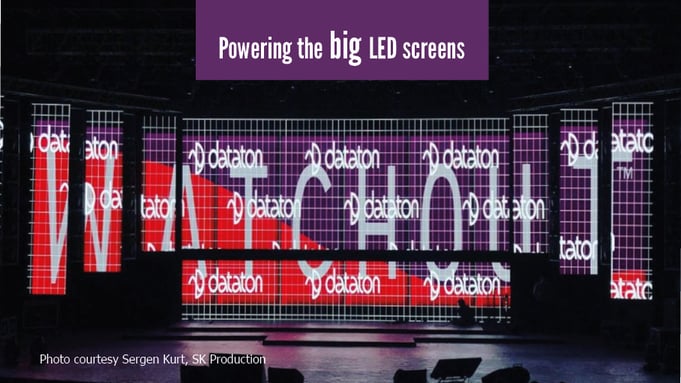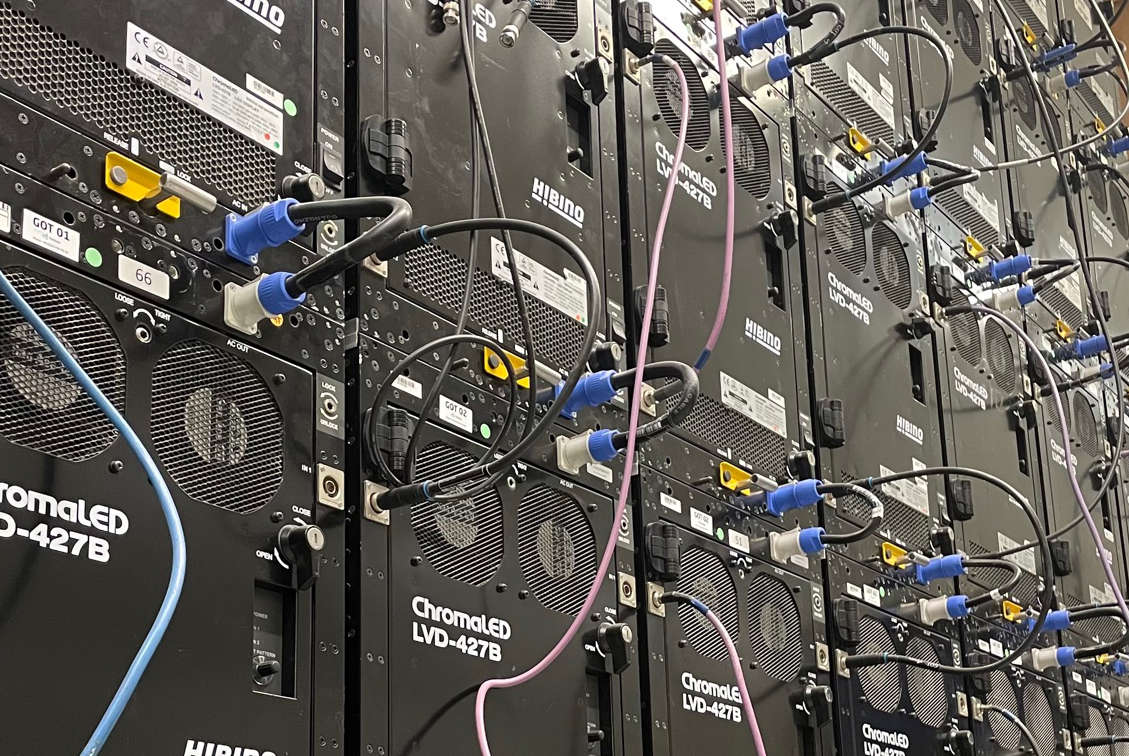
You're all set to make an impact with giant LED screens: you've got the venue, the vision and the content is ready to roll. But have you got the power? Mats Karlsson, CEO at Stage Smarts, looks at key factors to keep in mind when planning power distribution for LED screens.
- The challenge
- How much power do I need?
- Beware the sneaky currents
- Conclusion
The Challenge
Despite the LEDs getting more and more efficient, big LED screens still consume a lot of power, and dealing with that and other power-related issues isn’t trivial. Not everything is quite what it seems.
HOW MUCH POWER DO I NEED?
Manufacturers of LED screens typically state a maximum power consumption figure per panel or square meter as well as average power consumption, again per panel or square meter. Should you ‘play safe’ and assume the max power needed or is the average figure a better starting point? Well, that depends on your application and how adventurous you want to be!
First of all, keep in mind that both numbers are based on the screen running at full brightness. That is a very rare case. Most indoor screens are run at less than half brightness, sometimes even much lower than that. Secondly, the max power consumption assumes all three colours at full brightness – in other words, a white image. Again, typically a very rare situation. But you need to look at each application and project based on the use; in some cases, LED screens are run at near full intensity (outdoor shows in daytime for example) and if there is a lot of white content (images), the power consumption will be quite high, potentially near max consumption.
Generally speaking, a fairly safe assumption is to use the average power consumption as guide for how many panels you can drive from a single supply socket.
So let’s say your LED screen panels each draw 200W on average.
Your power distribution uses 16A circuit breakers, so the max capacity is 16A × 230V = 3680W. So capacity per channel is 3680 / 200 = 18.4 panels, right?
No, not quite – now we get to the challenges with inrush- and leakage currents!
SNEAKY CURRENTS
LED screen panels use lightweight and highly efficient switch-mode power supplies. Clever technology that comes with two drawbacks. Firstly, they pull A LOT of current during a fraction of second when they are plugged in. Secondly, their design generates harmless but significant ‘background’ earth leakage current. These two issues are what really limit the number of LED screen panels you can put on any given channel (and circuit breaker) in your power distribution.
The inrush current is what forces you to turn on the circuit breaker several times before it stays in the ‘on’ position. Not good for the LED panel and not good for the circuit breaker.
Long cables tend to reduce this problem as the cable introduces a bit of resistance that limits the peak inrush current. The leakage current generated is a trickier problem. It’s highly recommended – and in most cases mandatory – to have 30mA ‘earth leakage’ protection on supplies of 32A or less.
However, an LED panel can easily generate as much as 2-3 mA of harmless background leakage and the “30mA” earth leakage breaker is allowed to cut the power already as 15mA!
Let’s assume 15mA and 3mA per panel – that’s max 5 panels per circuit breaker.
CONCLUSION
As you can see, it is not the power consumption that limits the number of panels per circuit breaker, it's the inrush and leakage currents. So, don’t be surprised if you end up needing more power distribution channels than indicated by a calculation based on power consumption alone.
And a final word of advice to help reduce power-related issues: use a professional power distribution system (full disclosure, I am CEO at Stage Smarts!) with circuit breakers and earth leakage protection as these are more tolerant against these inherent challenges.
Previously published on the StageSmarts blog. Reproduced with kind permission of Stage Smarts AB.
More blogs you might like:
Multiexperience – the next tech trend in the AV industry?
LED: From display niche to leader in large screen visualization
Flexible LED content design demands a spatial mindset
Guide to becoming a media server professional:




